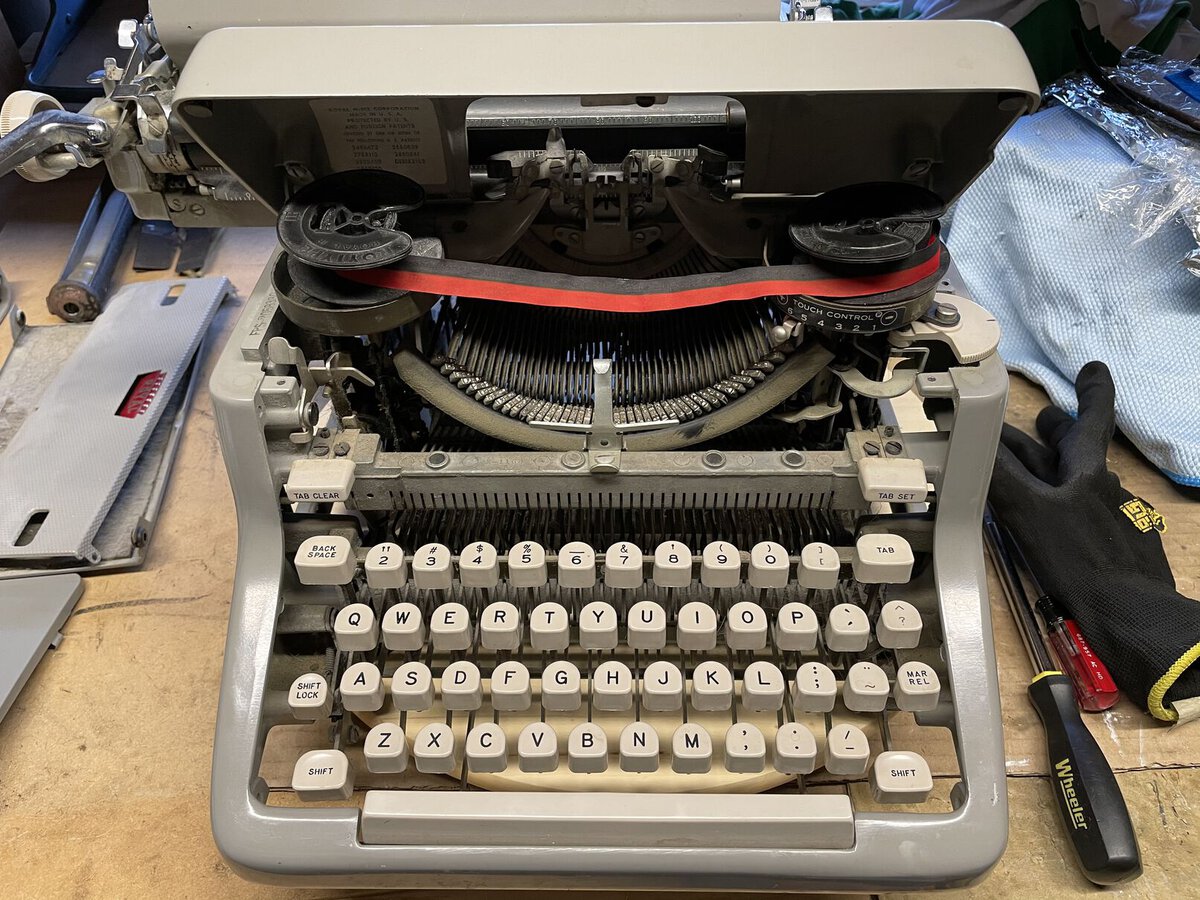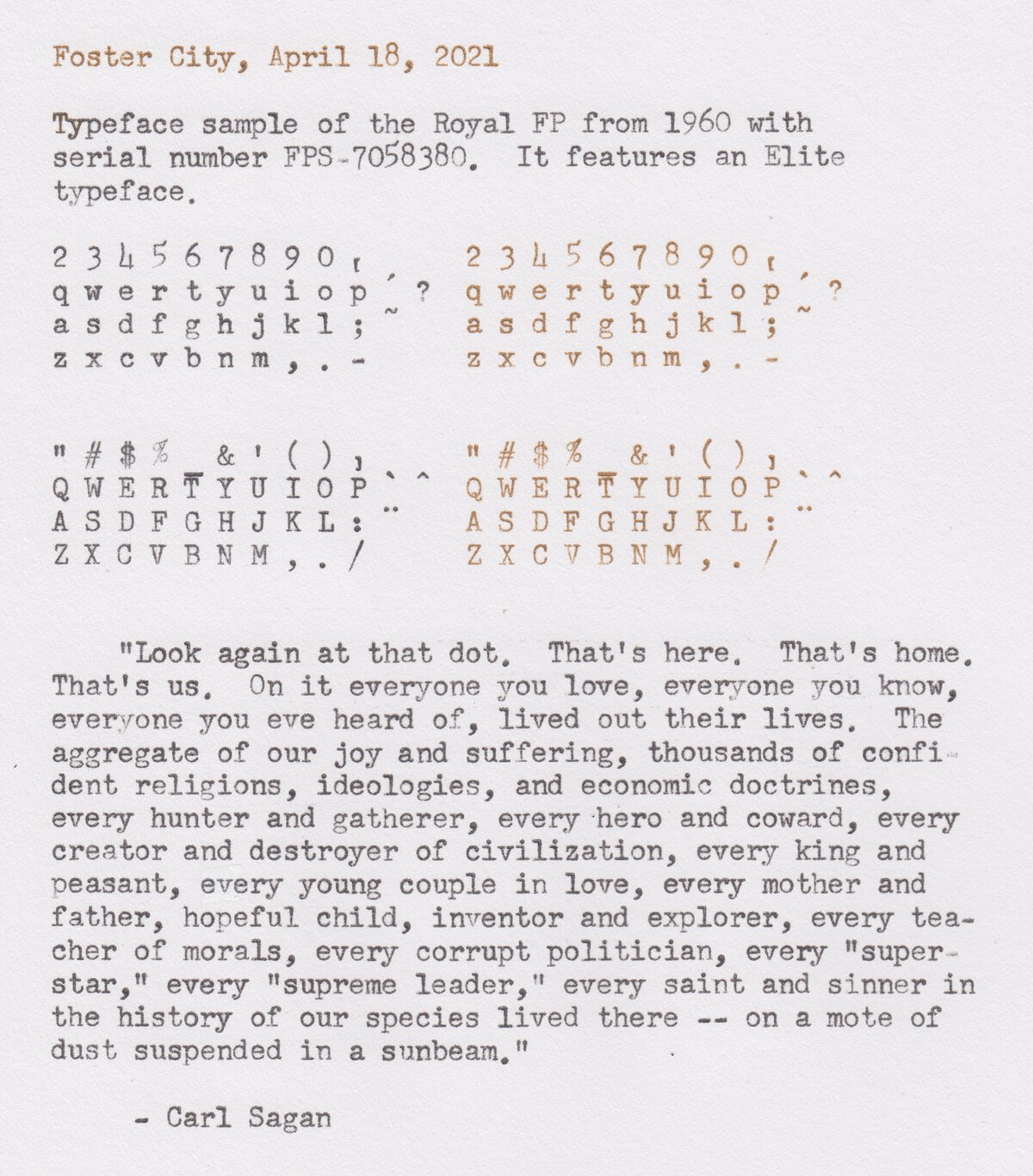Introduction
I bought this machine right after the start of the Bay Area “shelter-in-place” order related to the COVID-19 pandemic back in April 2020. Since we were all actually sheltering at the time I couldn’t go pick it up immediately. Friends kindly helped get the machine to me, and I eventually got my hands on it in November 2020, where it got to sit in our garage. Recently, just over a year after its purchase, I decided to process it. This was motivated in part because somebody in the Facebook ATI group reminded me that these are supposed to be great machines. I figured that it was as good a time as any to see for myself.

I rarely get machines that are truly usable out of the box (even though there was no box here). This machine was not in bad condition, but it had the typical dust that makes you not want to touch it too much, and certainly not put it inside your house and use it. So I gave it the basic treatment, which includes:
- removing all the body panels
- using the air compressor to blow out dust and eraser shavings
- cleaning the inside and segment with mineral spirits
- cleaning the body and panels with Simple Green
- lightly polishing all the smooth body panels
- cleaning the platen
- cleaning and lightly polishing the platen knobs
- cleaning the keyboard
- lightly polishing the chrome
- lightly waxing the body panels for a little extra shine and protection
- replacing the ribbon
This expedited process took me about 2-3 hours. 1

Special order
This Royal FP has a serial starting with “FPS” which indicates a “special order” machine.

In this case, what’s special about it is the international keyboard layout, with diacritics and even one dead key. Of special interest to me, this keyboard is good for French (only the rare “ç” is missing), as well as Italian.

Features
The large footprint of the machine surprised me a little. It is deep, as you can see on the following pictures! I don’t have a good picture of it, but there is a lot of empty space under the carriage in the back, but that space is fully enclosed by the machine anyway.

The machine requires special Royal spools. These are large plastic spools which are necessary to trigger the ribbon reverse.

Interestingly, this system is a descendant of the system introduced with the upstrike 1894 Remington 6! 2

The original ribbon had a loop on each end to hook up to bar in each spool, but you can also just attach a regular ribbon.

The ribbon selector is uncommonly situated on the right side of the machine. I find that this is not a bad placement in practice.

There are scratches in the back, which appears to be a common problem, and a few other scratches and dents. The letters “OPC” or “OPF” are lightly engraved in the paint on the back of the left side.

Otherwise, the machine is in good condition cosmetically, especially from the front, which matters the most.

I really like the look with the fancy red “Royal” badge in the front. Pushing it pops up the spool cover.

The machine has a distinctive 1950s/1960s style, while the heritage of the Royal 10 is obvious with the (covered) side openings.

Based on the sticker under the carriage, this machine was used at the University of California.

The machine in action
Besides the “FPS” for “special order”, the Royal FP also came with the prefix “FPP” for Pica and “FPE” for Elite, according to TWDB. My FPS happens to feature an Elite (12 CPI) typeface, which I tend to prefer to Pica. Here is a typeface sample.

I have now typed a few journal pages with it, and it’s very solid! The machine will not budge when typing, thanks to its weight and large rubber feet. The carriage is not exactly light, but that’s something I would expect for such a large machine. The action is not the lightest but it’s pleasant. Unsurprisingly, it reminds me of my Royal KHM, which I think is a little lighter to type with, although without trying several instances of a given model it’s hard to tell for sure. I should really put them next to each other and compare more closely.

Conclusion
This Royal FP is probably not a machine I will display at the center of my collection. Although in fairness I think it looks quite good, there is still a sort of office feeling to it. This is a machine designed to be used. It’s a writer’s machine. It’s what you use when you need to get work done and don’t want to be bothered by little annoyances. So far I haven’t found any issues with it. I think that I will use it regularly for writing my journal and the occasional letter.
More
- My Typewriter Database gallery
- Pictures after cleaning
- Pictures during cleaning
- My Reddit post (with close to 100 upvotes!)
- myoldtypewriter’s wonderful post about her FP

Comments powered by Disqus.